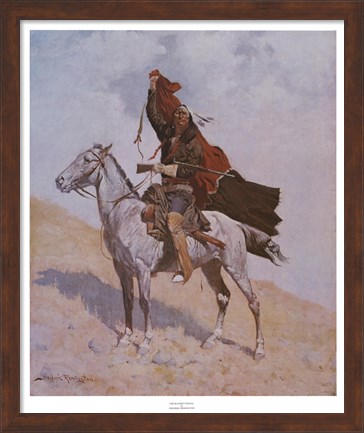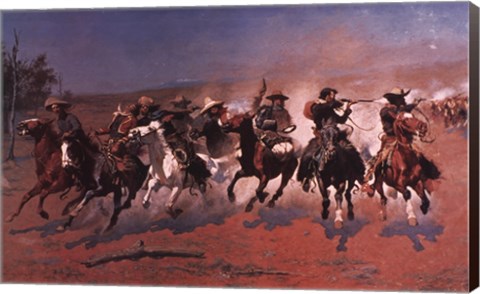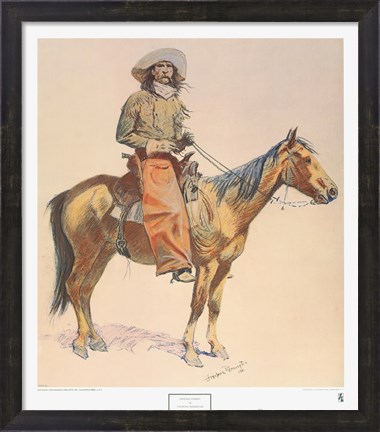
Frederick Remington is one of the most famous practitioners of western art of the past century and a half. Before motion pictures began to color our perceptions of the American West, his paintings, illustrations, and sculptures captured images of the western frontier, of cowboys, Indians, and cavalry troopers who populated the era he was born into and worked as an illustrator for Harper’s Weekly.
His focus was on people and animals, especially horses, of the American west, with the landscapes of secondary importance. Many of his oil pieces depict men on horseback moving at various speeds across the canvass, creating a sense of motion and energy that catches the eye and holds the attention.
Remington was just as adroit in executing bronze sculptures, the most famous of which was “The Bronco Buster,” which depicts a cowboy breaking a horse that is busily trying to unseat him.

Remington was born in 1861 in New York where he spent most of his childhood. After some failures at business and a rocky marriage he found his true calling working for Harper’s Weekly, a job that frequently took him to the American west in the 1880's and 1890's, executing some of his subjects from life. Unlike many artists, he was a shrewd businessman and a self promoter, something that redounded greatly to his success. He was an early champion of photoengraving process over wood engraving to reproduce visual art into magazine illustrations. He had an informal agreement with Harper’s Weekly for a first look at his art, but was free to sell it elsewhere.

Unfortunately Remington struggled with obesity all of his life. It eventually killed him in 1909 when he underwent an emergency appendectomy during which his girth complicated the procedure, resulting in peritonitis.
Over a century after his death, Remington remains an iconic artist/chronicler of the American west, capturing in his paintings and sculptures an era and a way of life, perhaps in some ways idealized, that is now long past.

